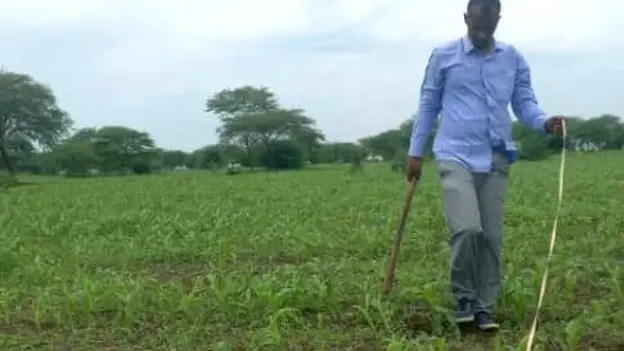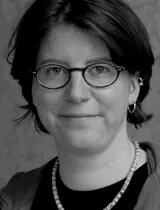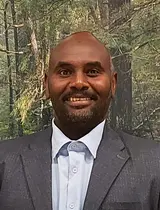Tandem Project & Alumni Project
Towards Resilient Ecosystems and Enhanced Services (TREES) in Sudan
Empirical Study & Community Engagement
Sudan’s savannah is home to a large number of these Acacia species, which are the main sources of Gum Arabic and other gums. Acacia trees in this region rely on the limited rainfall during the wet season, which allows them to produce the sap that is collected as the natural gum known as Gum Arabic. It has been used for centuries in various applications, from food and beverages to other industrial uses. Sudan is the world’s largest producer and exporter of Gum Arabic, contributing more than 70% of the global supply. It plays a significant role in the country’s economy, particularly in rural areas where acacia trees are abundant. It is used as a natural emulsifier that has had numerous uses throughout history, from the ancient Egyptians relying on it for mummification to more recent applications in everything from medicine and cosmetics to sweets and shoe polish.
Sudan is gifted with a large and diverse Savannah and dryland forest ecosystems. Millions of people in Sudan earn their incomes directly or indirectly from this economic sector. However, natural stands of Gum Arabic-producing trees are suffering a notable decline due to many anthropogenic pressures and recent climatic changes that necessitate effective adaptive strategies.
Ahmed Siddig, AGYA Member
Tackling deforestation amid drought and conflict
Drought and conflict-related deforestation have had significant negative effects on the Sudanese savannah, leading to environmental degradation, loss of biodiversity, and negative socio-economic consequences. The woodland savannah in Sudan relies heavily on seasonal rainfall. Unfortunately, droughts have become more frequent and severe, leading to water scarcity, which affects both vegetation and animal life in the savannah. Drought leads to poor vegetation establishment and consequently causes soil erosion as vegetation cover diminishes. Without trees and plants to anchor the soil, wind and water can wash away topsoil, which is crucial for farming and maintaining natural habitats. This directly impacts agriculture and the livelihoods of communities dependent on tree products, like Gum Arabic, fruits, animal fodders, and timber. On top of drought, the decades-long armed conflicts and violence in Sudan, including the current ongoing one, have contributed badly to deforestation as a result of direct destruction (e.g., burning of trees) or the need for firewood and charcoal.
Communities that rely on the sustainable use of natural resources for their livelihoods, such as collecting Gum Arabic, fruits, or timber, face economic hardship when forests are destroyed. Yet, they develop their own coping strategies. With the help of photo voice, a method through which participants can reflect and report their experiences with mobile phones or simple cameras, the local community will be able to present their own perspectives and knowledge throughout the research process.
Claudia Böhme, AGYA Member
Including local communities to co-create knowledge and foster sustainable development
This research project explores the impacts of climate change and anthropogenic pressures on the savannah ecosystems in Sudan, emphasising participatory agroforestry, vegetation enclosures, and water harvesting as nature-based solutions for ecosystem restoration and community resilience. The study aims to understand and predict savannah ecosystem responses to climatic and anthropogenic adaptation strategies, with a focus on key resilience measures such as tree diversity and abundance, regeneration health, biomass production, carbon sequestration, and community livelihoods. Through a participatory approach, the communities’ perspective shall be closely included to learn how people within the savannah’s ecosystem deal with climate change, how they use media in their farming practices, and what role gender plays in the process.
The project partners adopt multiple methods, including field observations, online meetings, on-site training, and extension for the community, and tree nursery experiments that are structured into three clusters: evaluating the current state of savannah natural stands, testing ecological responses to climate change scenarios, and assessing the effectiveness of participatory agroforestry practices. By jointly engaging displaced and host communities, the study fosters local empowerment and sustainable development, integrating gender perspectives to ensure equitable benefits. The research will highlight the socio-economic impacts and success factors of community-led restoration management, and offer strategies for sustainable ecosystem organisation
Ahmed Siddig and Claudia Böhme extend their gratitude to the project assistants, Mr. Nasradeen Gadallah, Mr. Altaher Balla, and Mr Abubaker Rugamba, who play a crucial role in the field work, experimental setup, data collection, community mobilization, and liaison with Forest National Corporation (FNC), despite numerous challenges and logistical obstacles. The project partners sincerely thank the heads and staff of the FNC in Gedaref and Blue Nile regions for their support and cooperation, and they are also deeply grateful to the community members who are involved in the project activities.
- Disciplines Involved
- Forestry Ecology, Anthropology, Migration Studies
- Cooperation Partner
- Forest National Corporation (FNC), Sudan
- Year
- 2025 - 2026
- Funding Scheme
- Tandem Project & Alumni Project
- Countries Involved
- Sudan, Germany


